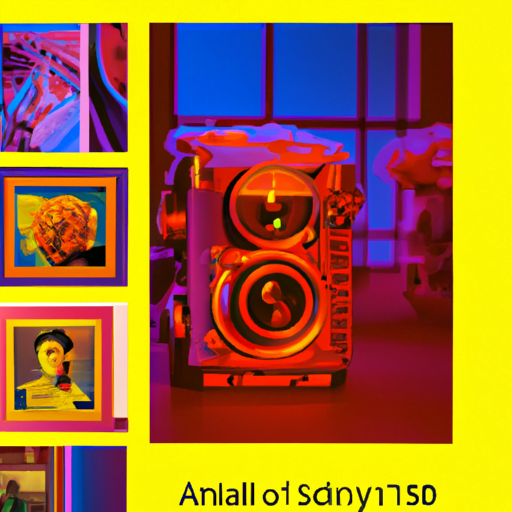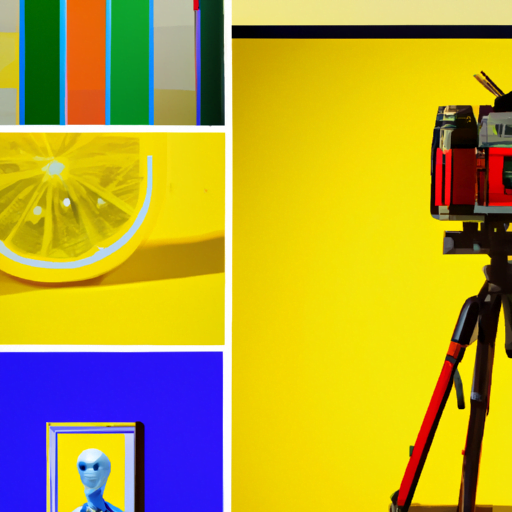
-
Table of Contents
The Role of Storytelling in Visual Design

Visual design is a powerful tool that can captivate and engage audiences. It has the ability to convey emotions, communicate messages, and create memorable experiences. However, to truly connect with viewers, visual design must go beyond aesthetics and tap into the power of storytelling. Storytelling in visual design allows designers to create narratives that resonate with audiences, evoke emotions, and leave a lasting impact. In this article, we will explore the role of storytelling in visual design and how it can elevate the effectiveness of design projects.
What is Storytelling in Visual Design?
Storytelling in visual design involves using visual elements, such as images, colors, typography, and composition, to tell a story or convey a message. It goes beyond simply presenting information and aims to create a narrative that engages the viewer on an emotional level. By incorporating storytelling techniques into visual design, designers can create a more immersive and memorable experience for their audience.
The Power of Storytelling in Visual Design
1. Emotional Connection: Storytelling in visual design allows designers to tap into the power of emotions. By creating narratives that resonate with viewers, designers can evoke specific emotions and forge a deeper connection with their audience. For example, a charity organization may use visual design to tell the story of an individual in need, evoking empathy and inspiring viewers to take action.
2. Memorable Experiences: Humans are wired to remember stories. When information is presented in a narrative format, it becomes more memorable and easier to recall. By incorporating storytelling into visual design, designers can create experiences that leave a lasting impact on viewers. This can be particularly effective in branding, where a well-crafted story can help a brand stand out and be remembered.
3. Engaging and Captivating: Stories have the power to captivate and engage audiences. When visual design incorporates storytelling, it becomes more than just a static image or a design element. It becomes a vehicle for communication and engagement. By creating narratives that unfold visually, designers can keep viewers engaged and encourage them to explore the design further.
Examples of Storytelling in Visual Design
1. Nike’s “Just Do It” Campaign: Nike’s iconic “Just Do It” campaign is a prime example of storytelling in visual design. The campaign tells the story of athletes overcoming challenges and pushing their limits. Through powerful visuals and inspiring messages, Nike creates a narrative that resonates with viewers and motivates them to pursue their goals.
2. Apple’s Product Launch Events: Apple is known for its captivating product launch events, which are carefully designed to tell a story. From the anticipation-building invitations to the carefully choreographed presentations, Apple creates a narrative around each product launch. By incorporating storytelling into their visual design, Apple creates a sense of excitement and emotional connection with their audience.
3. The New York Times’ Interactive Features: The New York Times often uses interactive features to tell stories in visual design. For example, their “Snow Fall” feature combines text, images, videos, and interactive elements to tell the story of a deadly avalanche. By incorporating various visual elements and interactive components, The New York Times creates an immersive storytelling experience that keeps readers engaged.
How to Incorporate Storytelling into Visual Design
1. Define the Narrative: Before starting a visual design project, it is important to define the narrative or message you want to convey. What story do you want to tell? What emotions do you want to evoke? By clearly defining the narrative, designers can create a cohesive and impactful visual design.
2. Use Visual Elements to Support the Story: Once the narrative is defined, designers can use visual elements to support and enhance the story. This can include selecting appropriate images, colors, typography, and composition that align with the narrative. For example, a design for a luxury brand may use elegant typography and sophisticated colors to convey a sense of exclusivity and refinement.
3. Create a Visual Hierarchy: A well-designed visual hierarchy can guide viewers through the narrative and highlight key elements of the story. By using size, color, and placement, designers can create a hierarchy that directs the viewer’s attention and ensures that the most important elements are noticed.
4. Incorporate Interactive Elements: Interactive elements can add depth and engagement to visual storytelling. By incorporating animations, videos, or interactive features, designers can create a more immersive experience for viewers. This can be particularly effective in digital design, where users can interact with the design and explore the narrative at their own pace.
The Impact of Storytelling in Visual Design: Case Studies and Statistics
1. Case Study: Airbnb
Airbnb is a prime example of a company that uses storytelling in visual design to create a strong brand identity. Through their website and marketing materials, Airbnb tells the stories of their hosts and guests, showcasing the unique experiences and connections that can be made through their platform. This storytelling approach has helped Airbnb differentiate itself in the crowded travel industry and build a loyal community of users.
2. Statistics: The Power of Visuals in Storytelling
– According to a study by HubSpot, content with relevant images gets 94% more views than content without images.
– A study by Nielsen Norman Group found that users pay close attention to photos and other images that contain relevant information.
– According to a report by Adobe, 38% of users will stop engaging with a website if the content or layout is unattractive.
Summary
Storytelling plays a crucial role in visual design, allowing designers to create narratives that resonate with audiences, evoke emotions, and leave a lasting impact. By tapping into the power of storytelling, visual design can go beyond aesthetics and create engaging and memorable experiences. Through examples, case studies, and statistics, we have explored the impact of storytelling in visual design and provided insights on how to incorporate storytelling techniques into design projects. By embracing storytelling, designers can elevate the effectiveness of their visual design and create experiences that truly connect with viewers.
